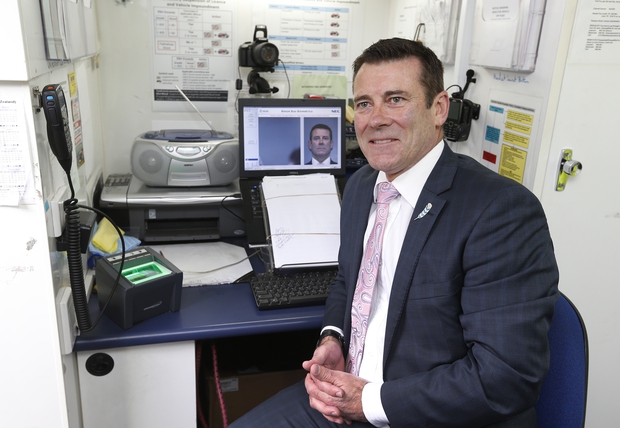For a nation built mostly on newly-arrived immigrants, it’s an issue guaranteed to inflame heated and at times vicious debate.
Outright distrust and opposition to anything “foreign” was part of our social fabric until 70 years ago, and at one stage was enshrined in our political system via The White Australia policy.
Then, the post war immigration boom saw waves of European refugees flee their war-torn homelands in search of a better life.
Those new arrivals changed Australia forever, overwhelmingly for the better, as did the influx of Asian immigrants fleeing conflict in the 1970s.
But despite the proclamations from our leaders that we are a tolerant mob who embrace cultural diversity, the deep-seated distrust among established Australians never really evaporated, as evidenced by the animosity towards new arrivals from the Middle East.
So inflamed are passions, it is nigh on impossible to have a sensible debate over levels of immigration whether it be in regards to the continent’s environmental sensitivities or on the impact on the economy.
Those who raise legitimate concerns often are accused of racism.
That’s understandable given environmental protection and the economy have become convenient smokescreens for those who harbour deep prejudices.
Aussie, Aussie, Aussie and GDP gold
Sometime in the next few weeks, there will be jubilation in the halls of Canberra when Australia assumes the world record for the nation that has stayed out of recession the longest.
Spending isn’t always bad
Investing for the future at a time of record low interest rates and low national income is vital, writes Ian Verrender.
The March quarter GDP numbers are expected to show 104 quarters without a recession, besting current record holders at 103, the Netherlands.
If you ask our political masters, they’ll invariably declare that most of it was down to sound economic management, an independent central bank that made the correct calls at the crucial times, and a flexible economy that can handle the ebb and flow of global tides through a free floating currency.
That’s all true, to a certain extent.
But a fundamental ingredient in that economic miracle has been immigration and more particularly the extent to which the program has been ramped up in the past 15 years.
From around 90,000 at the turn of the century, our annual intake of immigrants has risen to more than 200,000 a year.
That’s put a rocket under our population growth rate, which has surged to 1.8 per cent over the past 15 years, way above the OECD average of 0.7 per cent.
From a humanitarian perspective, it’s allowed us to strut the world stage from the vantage of the high moral ground.
However, from an economic viewpoint, it’s delivered our leaders a convenient buffer with which to hide a multitude of fiscal sins and allowed them to shirk making tough decisions.
How immigration boosts GDP
There’s a fairly simple relationship between immigration and economic growth. The more people you have, the bigger your economy. More people buy more goods and services.
There’s nothing inherently wrong with boosting your growth through immigration.
But the crime committed by Australian governments of all persuasions in the past 20 years is that, while they’ve been happy to accept the kudos for economic growth, they’ve been totally unwilling to spend the necessary cash to ensure the economy can cope with such a dramatic influx of new arrivals.
In essence, they’ve cooked the books.
Political editor Chris Uhlmann discusses what the new Australian citizenship test says about Malcolm Turnbull’s leadership.
As a result, many of our major cities are choking. Our infrastructure is obsolete. Utilities are struggling. That, in turn, has adversely affected our productivity and led to further distortions in how our wealth is distributed.
The laughable illusion of our economic miracle — the nation that fuels and feeds the world — is highlighted by looking just one small step beyond the raw GDP data.
If you simply divide our economic growth performance by the number of Australians, our growth doesn’t look anywhere near as flash.
On an annualised basis, our per capita GDP growth has never been much above 2 per cent since the last recession 25 years ago, and that was for just a few years around the new millennium.
Most of the time it’s been around 1.5 per cent and more recently 1 per cent. That’s tepid at best.
That’s the reason why, in recent years, it often has felt like a recession. In fact, during 2009, the economy was in reverse when measured in per capita growth terms.
Once you spread the extra wealth around all those extra people, we’ve been barely marking time. So much for the boom.
More people, less pay, same old infrastructure
Most new arrivals head to where they can find work. That’s meant most immigrants have headed towards the biggest cities, Sydney and Melbourne.
Since around 2003, Melbourne’s population has swelled by almost 1 million, with Sydney not far behind.
All those extra people have to live somewhere and that puts pressure on housing.
Despite the common misconception peddled by shock jocks that new immigrants flock here for social security benefits, most in fact are desperate for work. That puts pressure on wages.
It is little surprise then that in the past decade, housing prices, particularly in the major centres have soared while wages growth now is the slowest since the last recession.
It’s never a simple, linear argument. Immigrants are amazingly adept at starting their own businesses, thereby creating employment.
And record low interest rates combined with tax incentives that have transformed housing into a preferred investment vehicle have been the primary drivers in inflating the east coast housing bubble.
But there’s no denying the failure of successive governments to develop infrastructure that would have facilitated new housing, thereby helping alleviate the dangerous east coast property bubble, and maintained productivity.
Immigration crackdown — Where now for growth?
In the past week, there has been a clear shift in Federal Government thinking. The scaling back of 457 visas — which undoubtedly have been rorted — and the tougher approach to citizenship appear to herald a new approach to immigration.
Once again though, the motivation appears to be more on pandering to electoral and party room prejudice than being sourced in sound economics or environmental grounds.
Political posturing aside, it would appear Canberra unwittingly has exposed itself to a far greater problem.
Without the immigration sugar hit, what will drive the Australian economy into the future?
Most of our economic growth forecasts have been based on population growth of around 400,000 a year; almost a new city.
With the mines now running at peak capacity, resource prices in decline and the east coast housing boom on its final doomed run, a pull back on immigration — the secret weapon in our economic miracle — will leave our leaders with nowhere to hide.
To further complicate matters, if productivity is to be lifted, a major infrastructure spend is required; the money that should have been spent all along to cope with the immigration intake.
Perhaps they will be forced to confront serious fiscal issues if they truly want to bring the budget deficit back under control instead of simply relying on endless numbers of new arrivals to inflate the economy and the tax base.
Maybe they will get serious about a resources rent tax, rather than idly standing by and watching the nation’s riches hauled off for little return.
Tax cuts for foreign corporations may take a back seat to enforcing the law on company tax. And they might even question whether we can afford the enormous tax breaks on superannuation and property investment for the wealthy.
Maybe. But it will probably take a recession to do it.





